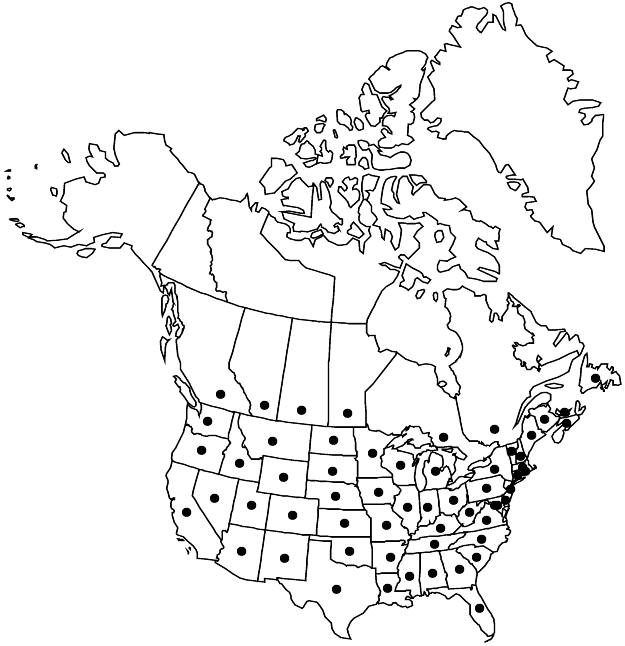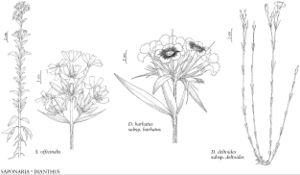Saponaria officinalis
Sp. Pl. 1: 408. 1753.
Plants perennial, colonial. Stems erect, simple or branched distally, 30–90 cm. Leaves: petiole often absent or winged, 0.1–1.5 cm; blade strongly 3 (–5) -veined, elliptic to oblanceolate or ovate, 3–11 (–15) × 1.5–4.5 cm. Cymes dense to open. Pedicels 1–5 mm. Flowers sometimes double; calyx green or reddish, often cleft, 15–25 mm, glabrous or rarely with scattered trichomes; petals pink to white, often drying to dull purple, blade 8–15 mm. Capsules ca. 15–20 mm. Seeds 1.6–2 mm wide. 2n = 28.
Phenology: Flowering spring–fall.
Habitat: Waste places, streamsides, fields, roadsides
Elevation: 0-2600 m
Distribution

Introduced; Alta., B.C., Man., N.B., Nfld. and Labr. (Nfld.), N.S., Ont., P.E.I., Que., Sask., Ala., Ariz., Ark., Calif., Colo., Conn., Del., D.C., Fla., Ga., Idaho, Ill., Ind., Iowa, Kans., Ky., La., Maine, Md., Mass., Mich., Minn., Miss., Mo., Mont., Nebr., Nev., N.H., N.J., N.Mex., N.Y., N.C., N.Dak., Ohio, Okla., Oreg., Pa., R.I., S.C., S.Dak., Tenn., Tex., Utah, Vt., Va., Wash., W.Va., Wis., Wyo., Eurasia, in Mexico, South America, Asia (India), Africa (Egypt), Australia
Discussion
Saponaria officinalis, long cultivated for its showy flowers, is a widely naturalized, sometimes troublesome weed. It may persist for years about abandoned home sites. “Double”-flowered horticultural forms, which may lack functional stamens, also occur in the wild, where locally they may be as common as, or even more common than, “single”-flowered forms.
In former times, the leaves of this species were gathered and either soaked or boiled in water, the resulting liquid being used for washing as a liquid soap. Because of its saponin content, the species can be poisonous upon ingestion, in much the same manner as Agrostemma githago.
Selected References
None.
